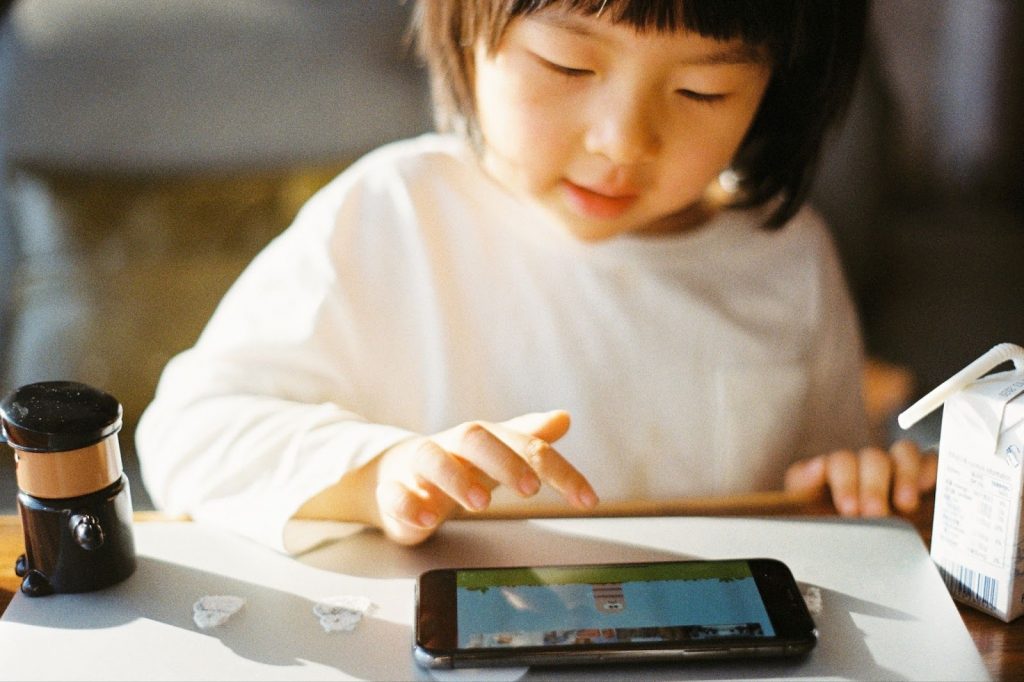All kids, at some point in their leaning period, use rote memorization to pass a test or exam. But they also forget what they learn within a month. Learning things by repetition, also referred to as rote learning, is widely used in primary and secondary schools in most countries around the world. Although the technique is very common among children, many educators from around the world are not on the same page about the effectiveness of this method.
Math & ELA | PreK To Grade 5
Kids see fun.
You see real learning outcomes.
Watch your kids fall in love with math & reading through our scientifically designed curriculum.
Parents, try for free Teachers, use for free
So, let’s see what it’s really all about and how it works.
What Is Rote Learning in elementary schools?

The typical definition of rote memorization is learning something by repetition. This is usually used by kids to memorize alphabets, numbers, poems, spellings, and multiplication tables. The process is inherently habitual or mechanical as it stores information in the brain for a short term, and does not enable children to retrieve or remember the same information even after a few weeks.
To understand this better, let’s take a simple example: You must have come across various poems or concepts in your children’s school books that you may have studied in your own primary school too. Although, decades later, perhaps you do not remember any of it. Why do you think that is?
This is so because memorizing by repetition at the time of tests and never revising that information is not retained by the brain. Rote learning definition is the theory of this practice—remembering by repeating.
This process does not enable a deeper understanding of concepts. Instead, it allows children to learn and recall something in a short time (like for a test happening in a few days), and later, forget about it. It does not enable permanent memorization.
Related Reading: Best Auditory Learning Techniques to Help Teachers
How Does Rote Memory and Learning Work for Children?
Rote methods of memorization use repetition to remember certain information. Once the information is repeated, it is stored in the short-term memory till it has to be used again. If the same information is used repeatedly, it becomes a long-term memory, and that’s how it is remembered for a longer term.
Now, since there are many concepts, stories, and information kids only study about and read during a year and never recall again later, it fades away from their short memory. But the things they learn and recall or apply repeatedly move to their long-term memory and become permanent.
The rote method does not enable comprehension of concepts. It only allows learning on the surface to score well on a particular test or exam. And that is why this form of learning is not a preferred mode of learning.
Rote Learning Examples and Techniques
One of the earliest memories of this type of learning for children would be playing spelling games or writing down spellings they couldn’t memorize repeatedly on a page. Other simple examples of rote learning are children learning the alphabet by repeatedly singing them in poems, songs, or otherwise. For higher grades, common rote memorization examples include the repetition of multiplication tables to help children memorize them. For making this process more effective, parents can make use of memory games for kids.
There are also other lesser-known techniques for the rote methods of learning that can help children or students memorize better. Some of these techniques are:
1. Audio recordings
One technique that works the best, especially for audio learners, is recording notes in an audio file and replaying them over and over again. This technique has proved to be effective in remembering the smallest details during an exam.
2. Using flashcards
Flashcards have long been a great way of learning—even for college students. A great way of using flashcards for kids to learn and retain information longer is to stick various cards around the house. This technique works best for visual learners as it helps them retain the smallest details with minimum effort.
3. Breaking it down into smaller bits
This is one of the best rote techniques ever. Kids find it easier to process small bits of information. To help them memorize easier and faster, try breaking down a big story or passage into smaller pointers and make them repeat it one by one.
4. Learning with all the senses
Just like audio and visual learners, there are also kids who learn better when they have a combination of both. Physical lectures help them engage all their senses and interact with their surroundings, and thus, memorize information easily.
Related Reading: Effective Ways To Teach Visual Learners
Does the Rote Method of Learning Work?

After a thorough understanding of what the rote method really is, the biggest question that arises is, does it really work? The answer to this question depends on what the kids are trying to learn. It works for students when they’re trying to learn the alphabet or multiplication table but not when trying to memorize a grammatical or mathematical concept. Some scientists believe:
- Information learned by rote techniques cannot be completely retained by the brain for longer periods of time. This happens as this technique changes the brain structure for it to be able to have high retention rates.
- Rote method of learning has been shown to change the functioning of the brain in certain ways that result in improving memory and amplifying neuroplasticity.
The other side of the coin is that the rote method of memorization is not a very popular technique of learning in today’s world. Educators worldwide are against it as they believe it discourages creativity and thinking in students. Some educators suggest that students lose interest in studies and focus during repetition as it tends to get monotonous, and that it does not develop learning skills.
Related Reading: Best Brain Teasers for Kids to Enhance Focus & Memory
Impacts of Rote Memorization in Kids

How this learning strategy affects children’s brains depends on what it is that they are trying to learn. Some types of information are best memorized with the rote methods, while some other pieces of information cannot be taught with the rote method of memorization. Here are all the ways rote methods impacts children:
- It strengthens the ability to retain information and thus helps students in their later years to do so. But it can also become monotonous and boring after a while, and children tend to lose focus very easily.
- It enables students to retain memory in the short term. If the same information is repeated in regular intervals, it has the capability to move to long-term memory and be retained in the long term. However, information retention by repetition does not work the same for everyone.
- It makes students follow instructions and ask no questions. This discourages the development of creativity and leadership skills in them, which may affect their personalities in later years.
- It leaves minimal scope for learning conceptualization in kids. Mere repetition does not link concepts or encourage kids to understand concepts deeply or think critically.
- It has also been observed that rote memorization helps to rocket the speed of remembering and retaining information in their brains.
If you’re looking to decide if you should teach your kids using rote memorization techniques or not, there are studies on the role of rote techniques in learning in kids to help you decide. The studies have shown that it is most effective to follow rote teaching methods combined with modern techniques for the best development of kids.
Related Reading: Effective Ways To Teach Visual Learners
Rote Learning vs Meaningful Learning

To compare the two, let’s first understand what meaningful learning is. Meaningful learning is defined as the technique used to enable critical thinking and building knowledge over what was already learned. This helps students to make connections between the earlier gained knowledge and the new one.
Meaningful learning is very helpful when you’re trying to teach your students or kids to socialize and collaborate. It is a form of active learning that involves digital aids and enables students to learn constructively and work towards a specific goal.
Rote Learning Advantages And Disadvantages
According to a study conducted at MIT, Rote and Meaningful Learning have these advantages and disadvantages, respectively:
Rote Learning Advantages vs Disadvantages
| Advantages | Disadvantages |
| Works the best for memorizing and recalling the alphabet, numbers, multiplication tables, phone numbers, addresses, etc. | There is no deeper learning involved in the repetition of a similar phrase or information. |
| Is an easy process and do not involve rigorous activities for kids. | It enables students to store and retrieve information for shorter periods at first. |
| Makes it easy to recall information for kids in the shorter term and needs no cognitive effort. | There is almost nil development of skills like critical thinking, creativity, or problem-solving during the repetition. |
Meaningful Learning Advantages vs Disadvantages
| Advantages | Disadvantages |
| Students can build a deeper connection between concepts and knowledge. | Only works well with subjective knowledge, concepts, and creative ideas. |
| It enables students to gain knowledge and store and retain the same for longer periods. | Requires time and patience. Some students might not be willing to put in the effort. |
| Studies have shown that students are more likely to think critically and creatively to solve problems with meaningful learning techniques. | Needs active participation from kids to be able to connect the dots. |
Rote method of memorization has its advantages and disadvantages. Some educators still prefer it over modern learning techniques and some have bashed it outright. The right way to go about learning is always to combine different learning techniques and to see which combination works best for kids or students.
Every child is different, and thus, the learning techniques that work for each may vary widely. Do what’s best for them and there’s nothing that could stop them from learning and thriving as creative, smarter individuals!
Frequently Asked Questions (FAQs)
Should parents favor the rote method?
The rote method has various benefits for children. For instance, it has been proven to change brain functioning to improve retention for longer terms and improve activities like reading and understanding of mathematical concepts. On the other hand, rote methods are known to only enable kids to retrieve information for shorter periods of time and discourage the development of critical skills.
The right approach to learning is to mix meaningful learning with rote memorization and alter the techniques as per the child’s abilities and likes.
Does the rote method improve memory?
A recent study by the Radiological Society of North America has shown that it can actually improve the ability to fight memory loss and improve cerebral recall in older adults.
Where can rote techniques be effective?
The rote method is a great way to learn basic math concepts, basic vocabulary and spelling. Various studies have shown that the rote method is a great way of teaching primary kids addition, subtraction, and multiplication tables.
What are some alternatives for the rote method?
Some great alternative learning techniques to the rote method are:
- Active learning,
- Spaced repetition,
- Meaningful learning,
- Associative learning, and
- Critical thinking.
At what age should kids start using rote memorization techniques?
One of the first things that can be taught to children with rote methods are talking & counting. Usually, when taught with the rote method, kids are able to count to ten by the age of two.
Who invented rote-method learning?
Rote techniques was first studied by Hermann Ebbinghaus. His studies included a list of nonsense verbal words. He concluded that the main mechanism involved in learning the words in his lists was the association of each word with the next one.
What is the retention rate of the rote method?
Repetitive studies have been conducted around the world to come to a conclusion on the retention rate of rote methods. One of the scientists, Richard Atkinson conducted successful experiments to conclude that from lists of vocabulary, his rote learner test subjects were able to recall at a rate of 28%.
























